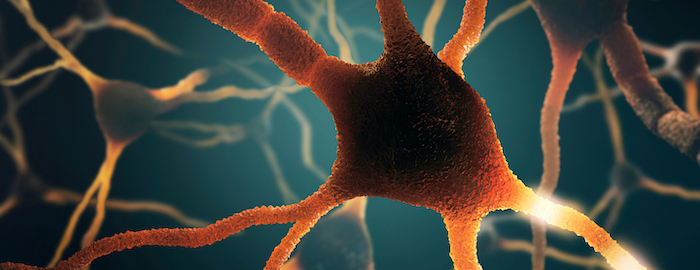
Fast-acting pain treatments that target nerves in a specific part of the body
Nerve blocks are versatile treatments used by pain specialists to diagnose and treat a wide range of painful conditions. They reduce acute pain due to injury, nerve trauma, surgery, and headaches. They are also used to alleviate chronic pain, in conditions like carpal tunnel syndrome, arthritis, neuralgia, cancer, and Complex Regional Pain Syndrome (CRPS).
Whether you are experiencing a new injury, a flare-up of an old injury, or an ongoing pain issue, nerve blocks can provide a faster and more comfortable recovery.
Facts and Information About Nerve Blocks
Nerve blocks are often used as treatments for pain due to a nerve injury or trauma. However, nerve blocks can treat many different types of pain, including bone and soft tissue pain.
Nerve blocks work directly at the source of pain by “turning off” a nerve's pain signals before they reach the spinal cord and brain. They stop the pain in a well-defined part of the body, such as the face, head, shoulder, knee, abdomen, or finger. This limited area is represented (innervated) by a single nerve or a group of interconnected nerves, known as a ganglion or plexus.
Nerve blocks can treat joint pain. Many patients are not aware that nerve blocks can help with arthritis pain in a joint or with pain after a joint replacement. The most commonly treated joints are the knee (genicular nerve) and shoulder (suprascapular nerve). Blocking these nerves offers great options for both short- and long-term pain relief.
Nerve blocks have many benefits and are used to:
- Treat painful conditions
- Find the source of pain
- Predict the outcome of future treatments
- Prevent chronic pain from a surgery
- Reduce pain and improve recovery after a surgery
Different Types of Nerve Blocks
Several different treatments fall under the “nerve block” category.
- A Single nerve block - medicine is injected around one nerve that is injured or flared up. If this nerve is in an outer part of the body such as an arm or leg, it is considered a Peripheral nerve block.
- A Ganglion block (or Plexus block) - medicine is injected around a group of interconnected nerves that serves a large body area such as the abdomen or pelvis. This type of block is often used for abdominal pain, pelvic pain, coccyx pain, rectal pain, and cancer pain.
- A Sympathetic nerve block (or injection) - medicine is injected along a chain of nerves that controls general body functions. (Commonly used for CRPS). Click here to read more.
Blocks for Different Areas of the Body
There are various blocks available, to cover different body areas. A pain specialist can determine the best block for your particular situation.
Nerve blocks according to the body area they treat:
- Face pain (Trigeminal nerve block, Supraorbital nerve block, Infraorbital nerve block)
- Headache (Occipital nerve block)
- Upper jaw pain (Maxillary nerve block)
- Nose and face pain (Sphenopalatine nerve block, Stellate ganglion block)
- Arm/hand pain (Carpal tunnel injection, Median nerve block, Ulnar nerve block, Stellate ganglion block, Brachial plexus block, Digital nerve block)
- Neck pain (Cervical plexus block, Cervical paravertebral block, Stellate ganglion block)
- Shoulder pain (Suprascapular nerve block)
- Knee pain (Genicular nerve block)
- Hip pain (Obturator nerve block)
- Leg/foot pain (Femoral nerve block, Sciatic nerve block, Lumbar plexus block, Peroneal nerve block, Plantar nerve block, Morton’s neuroma block)
- Low back pain (Cluneal nerve block)
- Pelvic pain (Ilioinguinal nerve block, Genitofemoral block, Ganglion impar block)
- Abdominal pain (Celiac plexus block, Hypogastric plexus block)
How Does a Nerve Block Work?
Depending on the painful area, a fast-acting local anesthetic is applied to a single nerve or a group of nerves. The local anesthetic stops the pain messages from leaving a nerve and reaching the brain. It offers immediate pain relief. While the local anesthetic lasts for several hours, the block can work to reset the overactive nerve firing and can have long-lasting effects for weeks and months. A steroid may be added to reduce irritation in the nerve and to extend the pain relief.
How is a Nerve Block Done?
Nerve blocks are outpatient procedures done under fluoroscopy (X-ray) or ultrasound guidance to increase safety and efficacy. Some nerve blocks require special needles that use low-level electrical current to find the target nerve. A patient may feel a slight twitch during the procedure. A nerve block takes only 5-10 minutes.
What are the Expected Results?
Pain relief after a nerve block is immediate, usually starting within a couple of minutes to a half-hour after the procedure. The effect of the local anesthetic usually lasts a couple of hours, but the effects can extend to several weeks and months. Some people find relief after a single nerve block while others may need a series of nerve blocks spaced over several months. Depending on the type of nerve block performed, patients who receive pain relief with the nerve block may be candidates for a nerve radiofrequency procedure. A radiofrequency procedure creates a lesion in the nerve to stop the nerve from sending pain signals for 6 months, up to 1 year.
Is There a Longer Lasting Treatment
Treatments offered to extend pain relief after a successful nerve block:
- Peripheral nerve stimulation (PNS)
- Radiofrequency neurotomy (RFN)
- Spinal Cord Stimulation
- Nerve Hydro dissection
- PRP
Nerve blocks may be used alone or alongside other treatments such as oral medications and physical therapy.
Precision Pain Care and Rehabilitation has two convenient locations in Richmond Hill – Queens and New Hyde Park – Long Island. Call the Richmond Hill office at (718) 215-1888, or (516) 419-4480 for the Long Island office, to arrange an appointment with our Interventional Pain Management Specialist, Dr. Jeffrey Chacko.













